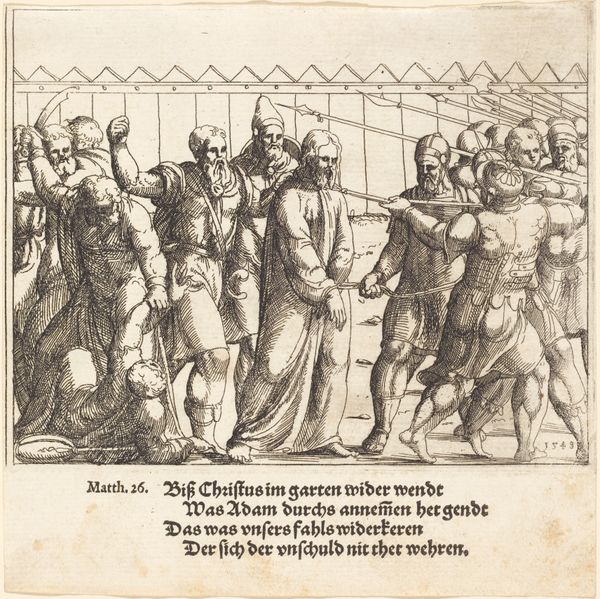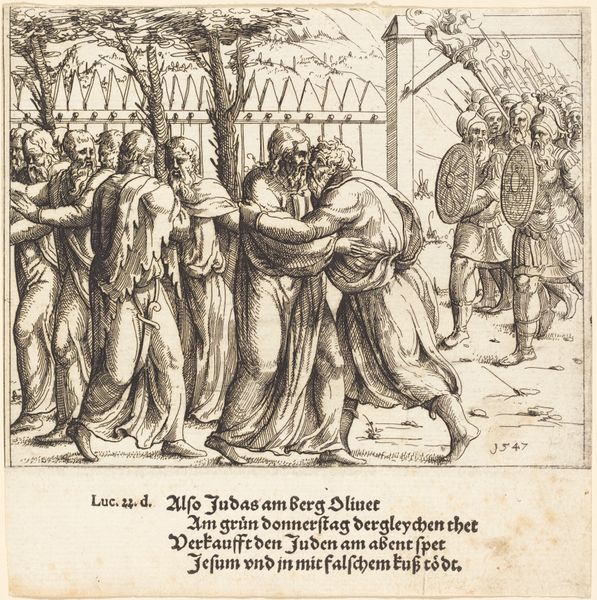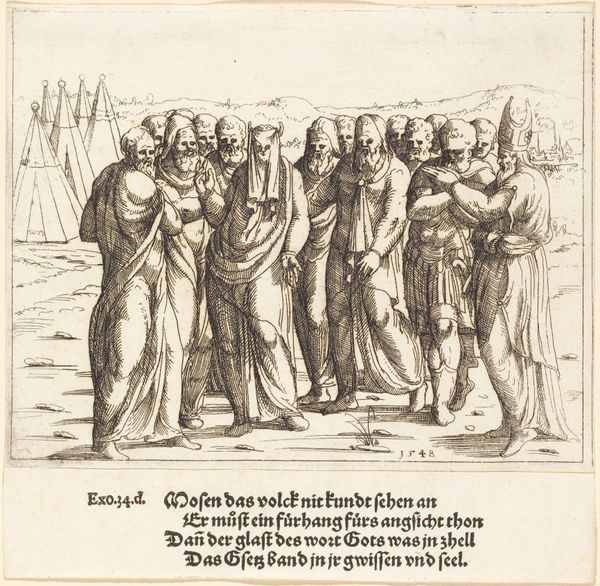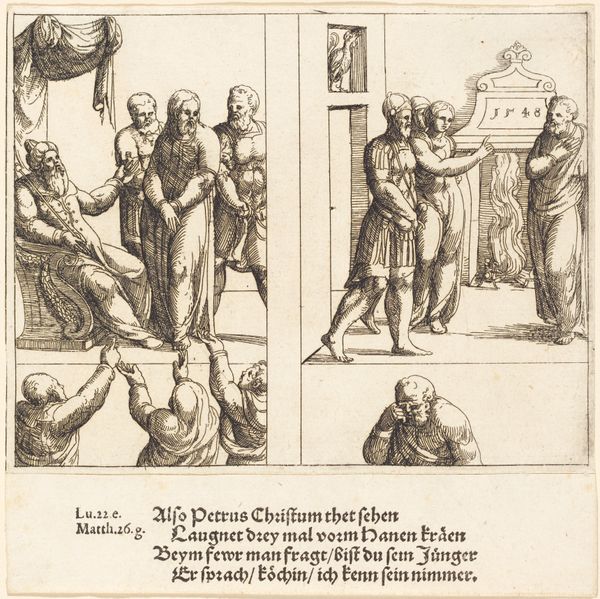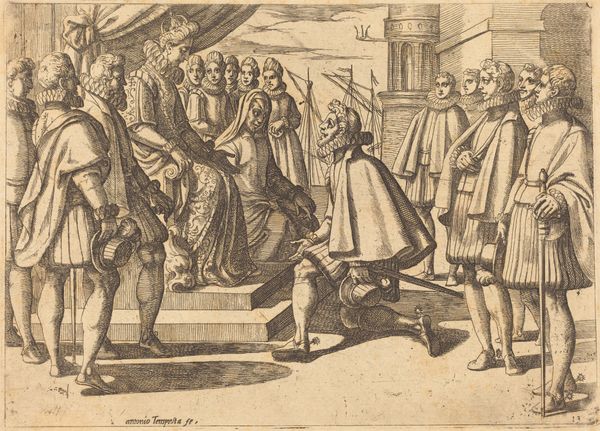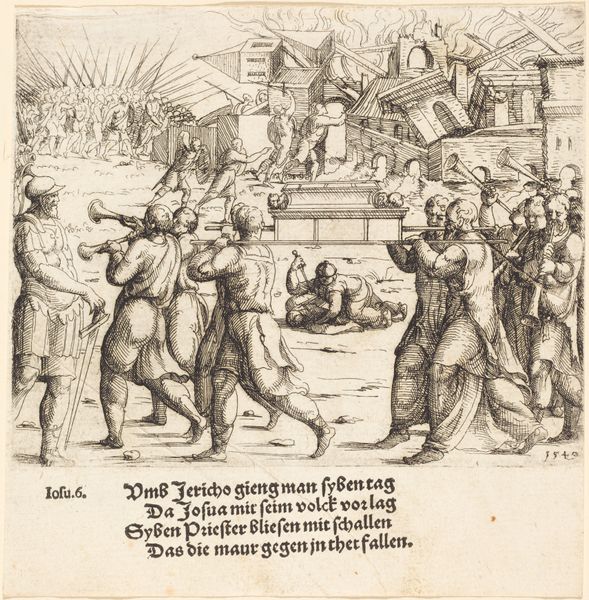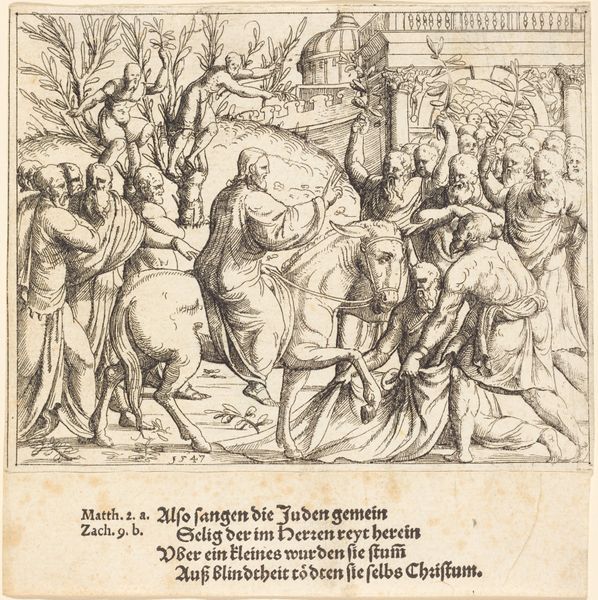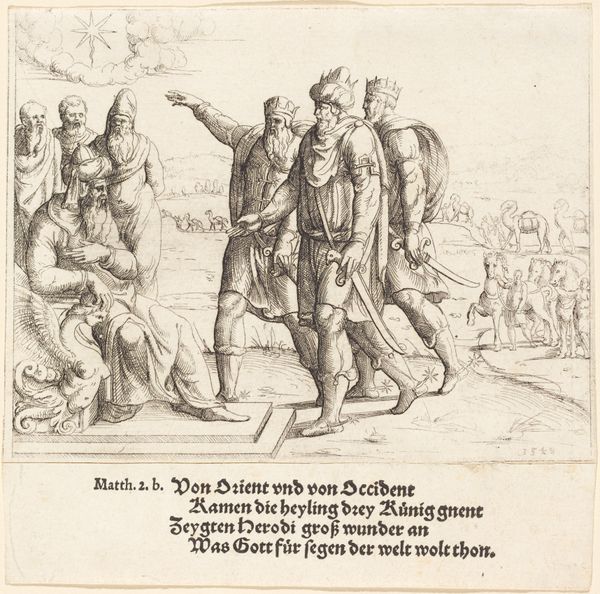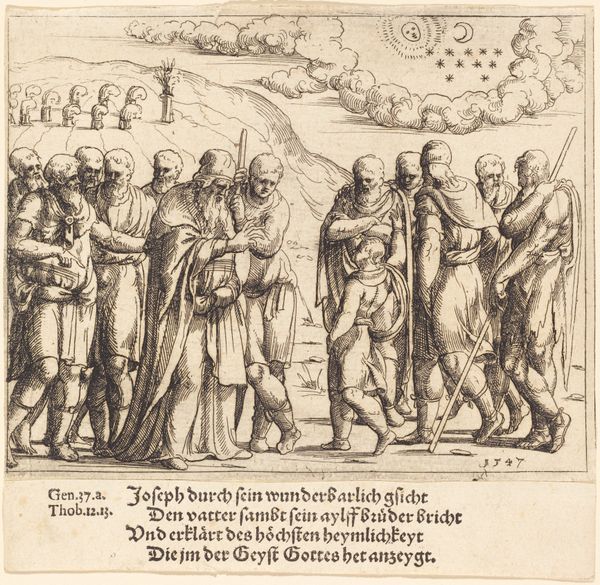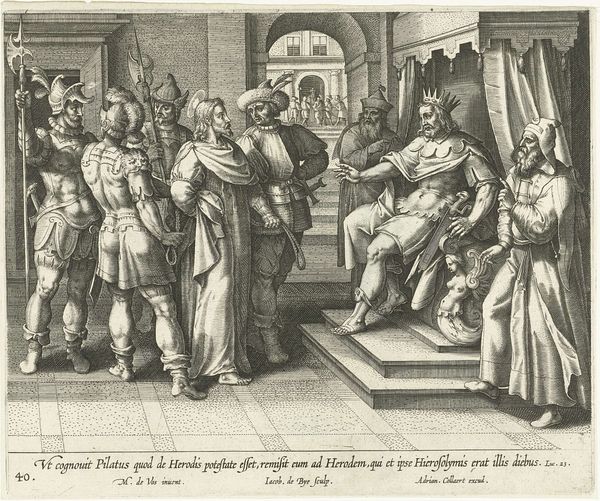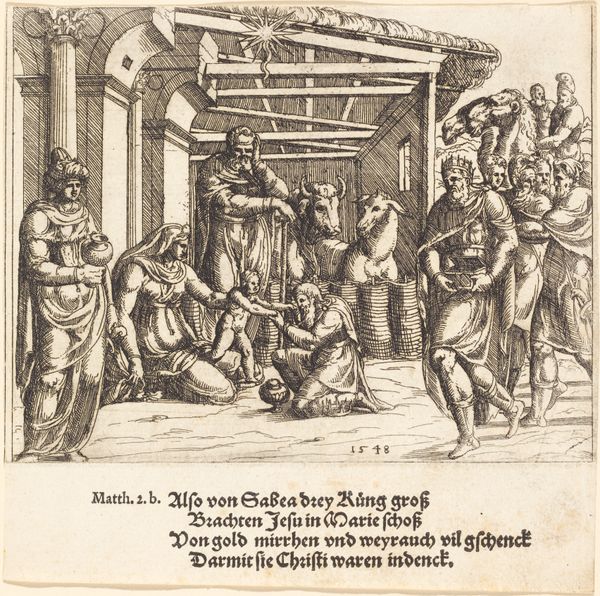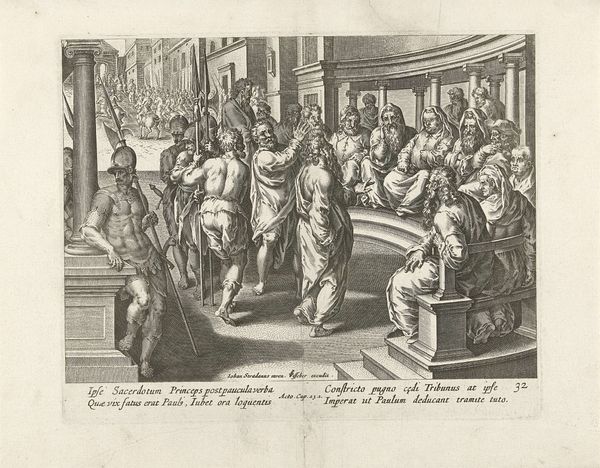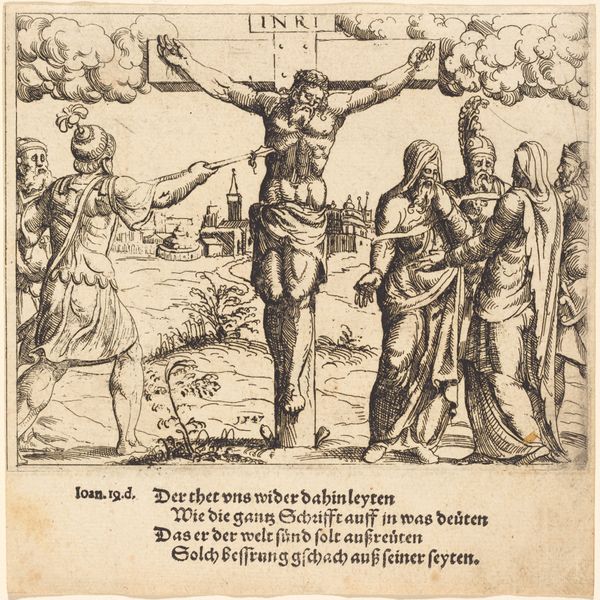
drawing, print, paper, ink, engraving
#
portrait
#
drawing
#
medieval
#
allegory
# print
#
figuration
#
paper
#
11_renaissance
#
ink
#
genre-painting
#
history-painting
#
northern-renaissance
#
engraving
Copyright: National Gallery of Art: CC0 1.0
Curator: Let's examine "Ecce Homo, and the Jews Deny Christ," a 1548 engraving by Augustin Hirschvogel. Editor: The stark contrast in line work immediately strikes me. It creates a tension, almost a visual friction that underscores the conflict in the scene. What material insights does Hirschvogel's printmaking offer? Curator: The medium of engraving itself is crucial. The sharp, deliberate lines, etched with considerable labor and craft, allowed for wider distribution. Consider the paper and ink themselves, basic but vital materials, employed here to spread this religious and historical narrative throughout Renaissance society. It is no accident the means reflect the message. Editor: Indeed. Shifting to a more formal analysis, the composition divides neatly into two spatial planes, doesn’t it? Note the staging—almost theatrical in its presentation. Pilate presents Christ on one side while a crowd on the right makes demands, or pronouncements. Curator: Absolutely. The lines create texture and movement, pulling the viewer's eye. Notice the density of figures versus the relative openness of the space around Pilate. Hirschvogel uses this visual imbalance to emphasize the oppressive crowd dynamic, reflective of his culture's complicated religious tensions at the time. Editor: Also interesting, is the relative flatness in the figuration: Hirschvogel hasn't embraced the plastic values fully, even while depicting a historical scene. Curator: Agreed. It’s more about conveying information than illusion. The stylized faces, the repeated gestures; they're not aiming for realism, but to communicate a potent allegorical narrative through specific gestures that were familiar at the time. Editor: Yes, I am especially drawn to the textural effects achieved via the engraving process – such beautiful hatching marks defining shape and form; there is also something to be said about the consumption and dissemination of readily available printed art on the whole – accessible at this time to everyday individuals. Curator: Hirschvogel uses a deliberate starkness to underscore the seriousness of this historical subject matter. This artwork reflects how materiality, from its artistic process to cultural distribution, speaks volumes. Editor: The formal staging lends a critical intensity that remains long after viewing this print.
Comments
No comments
Be the first to comment and join the conversation on the ultimate creative platform.
